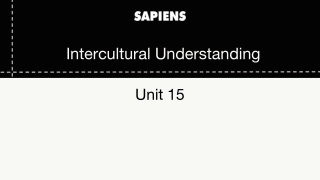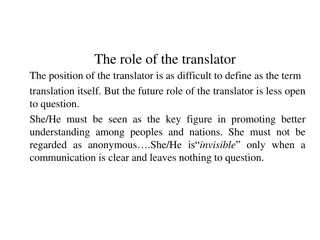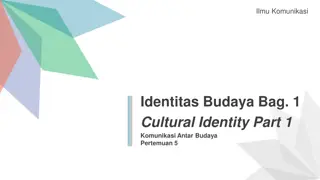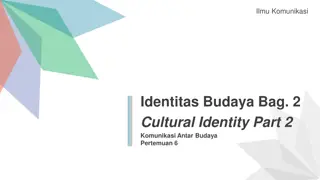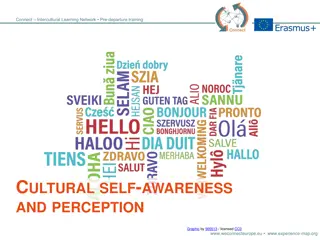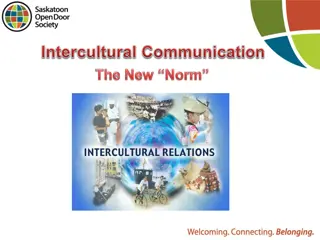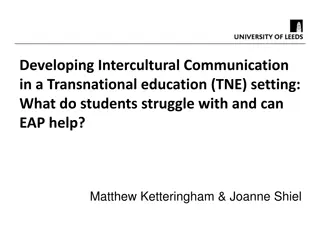
Cultural Variations in Communication Patterns
Explore the impact of code usage in intercultural communication, focusing on preferences in verbal code organization, cultural variations in persuasion styles, conversation structures, and the effects on intercultural competence.
Download Presentation

Please find below an Image/Link to download the presentation.
The content on the website is provided AS IS for your information and personal use only. It may not be sold, licensed, or shared on other websites without obtaining consent from the author. If you encounter any issues during the download, it is possible that the publisher has removed the file from their server.
You are allowed to download the files provided on this website for personal or commercial use, subject to the condition that they are used lawfully. All files are the property of their respective owners.
The content on the website is provided AS IS for your information and personal use only. It may not be sold, licensed, or shared on other websites without obtaining consent from the author.
E N D
Presentation Transcript
The Effects of Code Usage in Intercultural Communication Chapter 9
Preview Main Points I. Preferences in the Organization of Verbal Codes A. Cultures have distinct organizational preferences B. Organizational preferences in English C. Organizational preferences in other Languages II. Cultural Variations in Persuasion A. Quasilogical style B. Presentation style C. Analogical style III. Cultural Variations in the Structure of Conversations A. Value of talk and silence B. Rules for conversations IV. Effects of Code Usage on Intercultural Competence
I. Preferences in the Organization of Verbal Codes USA HINDI JAPAN Direct Specific Explicit Linear Indirection Implication Digression Stepping Stone Listener Responsible Confusing Imprecise Circular Speaker- Responsible Rude and aggressive Illogical Disorganized Unclear
II. Cultural Variations in Persuasion Cultures differ in what is evidence, logic, and in their persuasive styles. USA Physical evidence and eyewitness accounts OTHER CULTURES In some African Cultures to speak out is regard as suspicion Quasilogical Style: Statistics Testimonial accounts Presentational Style: emotional appeals Analogical Style: stories, parables, and analogies
III. Cultural Variations in the Structure of Conversations (1) A. Value of Talk and Silence: Euro-Americans/African Americans vs. Japanese, Chinese.. B. Rules of Conversations (1): Length Turn taking Kind of topics The way information is presented What shows interest The nature of the relationship between the conversants
III. Cultural Variations in the Structure of Conversations (2) B. Rules of Conversations (2): Cultural Variations in Conversational Style (Gudykunst &Ting-Toomey dimensions) Direct Indirect Elaborate Succinct Personal Contextual Instrumental Affective
IV. Effects of Code Usage on Intercultural Competence Just knowing the syntactic rules of other languages is not sufficient. Understand that other cultures may organize their ideas, persuade others, and structure conversations differently. Look for differences in how people from other cultures converse and use logics Ovoid dismissing differences as illogical, irrational, or wrong
Preview Main Points I. Preferences in the Organization of Verbal Codes A. Cultures have distinct organizational preferences B. Organizational preferences in English C. Organizational preferences in other Languages II. Cultural Variations in Persuasion A. Quasilogical style B. Presentation style C. Analogical style III. Cultural Variations in the Structure of Conversations A. Value of talk and silence B. Rules for conversations IV. Effects of Code Usage on Intercultural Competence

